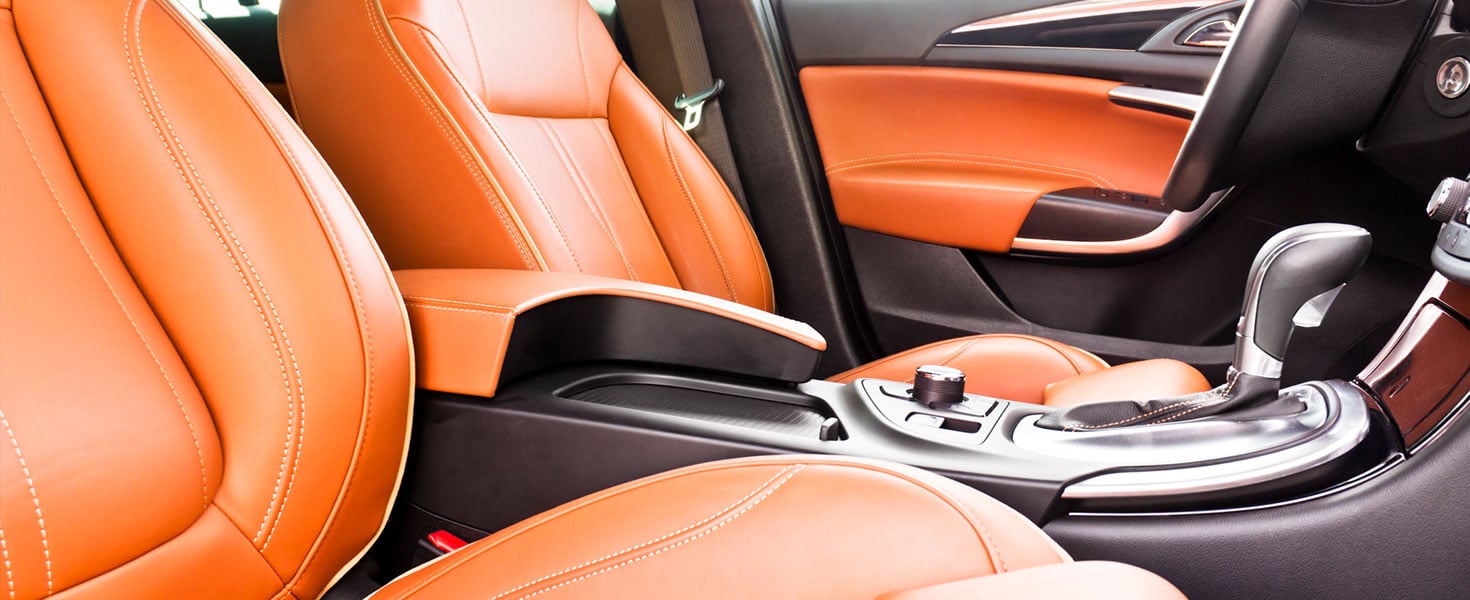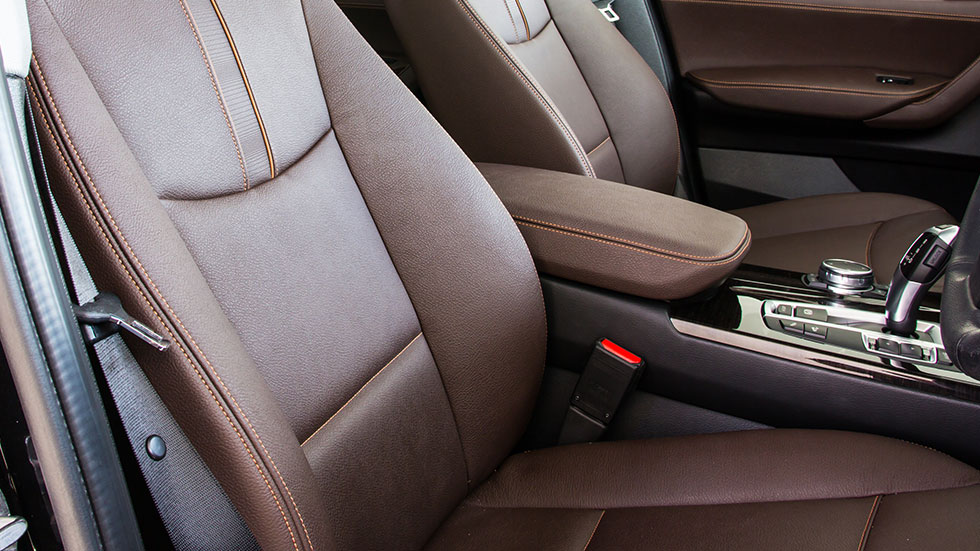

For many drivers, nothing beats the look, feel, and smell of a luxuriant leather interior. While its soft, supple textures give even a standard vehicle an atmosphere of refined sophistication, the high price of real leather can be a limiting factor for many buyers in the market for a new ride. Luckily, developments in new vehicle technology are not just limited to the infotainment systems and driver assist features packed onboard, but they also include upgraded upholstery options that can present the look and feel of real leather at a fraction of the price.
In this article, we will explore some of the differences between leatherette and genuine leather upholstery plus some of the pros and cons associated with each.

WHAT IS "LEATHERETTE" ANYWAY?
"Leatherette" refers to several synthetic leather upholsteries made from a mixture of vinyl and plastic. Its look and feel are almost identical to that of real leather and the term "leatherette" includes any upholstery described as: faux leather, pleather, Alcantara or Ultrasuede, artificial leather, synthetic leather, vegan leather, PU leather, or fake leather. The quality and lifelike look and feel of leatherette will vary between automakers, with some devoting more time and research into developing their own unique specialized blends.
NON-POROUS VS POROUS
Due to its vinyl and plastic makeup, leatherette is a non-porous upholstery considered to be waterproof. This makes it quite easy to clean using only a damp cloth in most cases and means it is also the perfect choice for drivers with messy kids or pets. Genuine leather, on the other hand, is porous. While this gives it a softer, more breathable quality, it also means real leather will absorb liquids, is more easily stained, and can require special products to clean to maintain its showroom luster. One downside to leatherette's non-porous construction is that it tends to trap more heat than real leather, making it more difficult during hot summer months. Also, it is far less breathable and will stick to damp, sweaty skin. One workaround to this is opting for ventilated seats to add some refreshing breathability.

ANIMAL VS PETROLEUM-BASED
Real leather comes most often from cow hide, which is part of the reason it can be so expensive and difficult for manufacturers to source. Additionally, since it is made from live animals, real leather is not an option for vegans or those concerned with avoiding animal byproducts. Leatherette, on the other hand, is petroleum-based, so while no animals are harmed in its production, it does require drilling and refining of fossil fuels, which also has adverse environmental impacts.
THE LUXURY FACTOR
There is no denying that leather is more luxuriant than leatherette. From its soft, supple feel to the aroma it leaves lingering in a vehicle, it is the little extra touches delivered by the real deal that makes it a must-have for many drivers. Not only will you pay more (sometimes thousands) for real leather, but you may experience higher resale values when it comes time to sell your vehicle. Additionally, real leather has a softness and breathability that is yet unparalleled by leatherette. All that said, if you are on a tight budget, opting for a leatherette interior may help you save enough money to be able to afford a higher-end vehicle.
In the end, for most drivers the choice between leatherette and genuine leather will come down to budget and personal preference. Drivers on a tight budget or with lots of children in and out of their cars will almost certainly want to opt for leatherette interior to prevent stains and provide easy cleaning. Drivers with more money to spend looking for that extra bit of comfort and luxury may want to hold out for the real thing.
